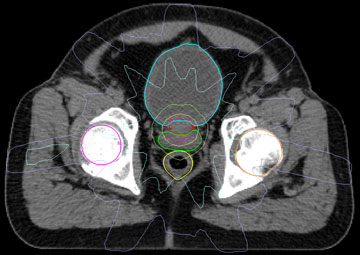CS Spin-off Morphormics, Inc., Sold to Accuray for $5.7 Million
Accuray, a publicly traded radiation oncology company, announced in July the acquisition of UNC computer science spin-off Morphormics, Inc., for approximately $5.7 million.
Morphormics develops medical imaging software systems that automatically recognize and extract anatomical structures from 2D, 3D and 4D medical images.
Accuray began licensing Morphormics’ autocontouring technology in 2008. The technology automatically identifies and draws the boundaries of the prostate and surrounding critical structures, which allows treatment planning software to focus the radiation dose on the prostate and minimize the delivery of radiation to the surrounding structures.
With the acquisition of Morphormics, Accuray plans to extend autocontouring capabilities for their products, the CyberKnife® Robotic Radiosurgery System and the TomoTherapy® System.
Morphormics was founded in 2001 by Kenan Professor of Computer Science Stephen Pizer, UNC Radiation Oncology Professor Ed Chaney, and former UNC Assistant Professor of Computer Science, Sarang Joshi, who is now at the University of Utah. Morphormics’ formation was also facilitated by Adjunct Research Professor Nick England, president of 3rdTech, a company founded specifically to incubate spin-offs that commercialize technology developed in the computer science department at UNC.

Axial slice from a CT image used for planning radiation delivery to the prostate gland. Contours shown are the prostate (red), bladder (blue), seminal vesicles (green), rectum (yellow), right femoral head (fuchsia), and left femoral head (yellow). These structures were automatically segmented in 3D using Morphormics’ proprietary technology that includes methods developed at UNC.
